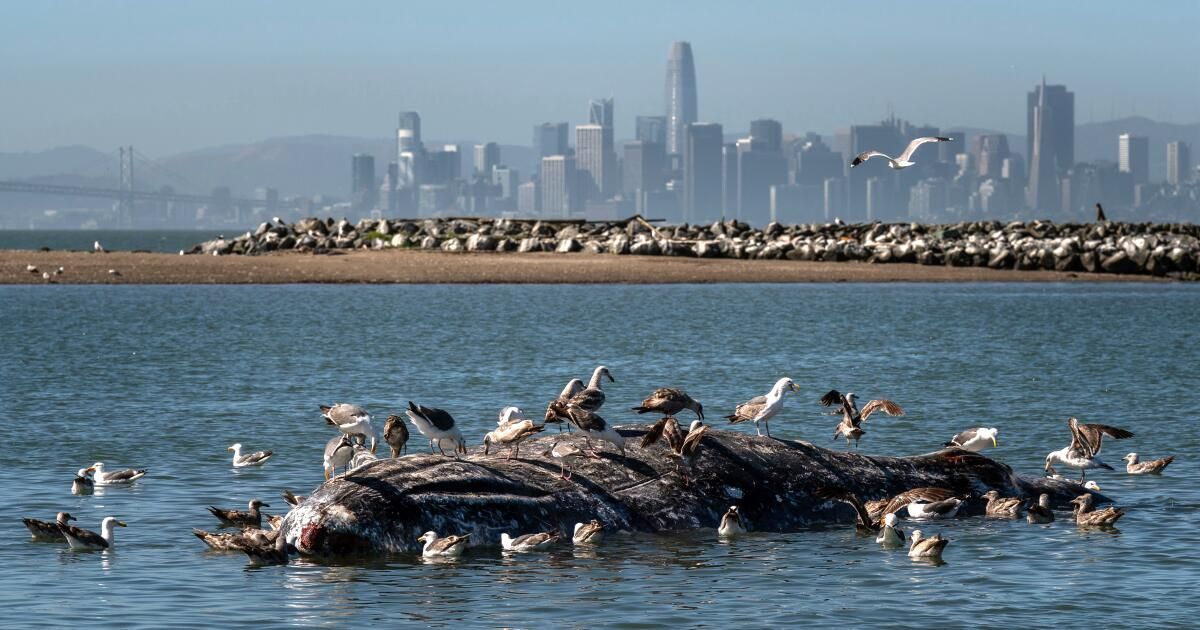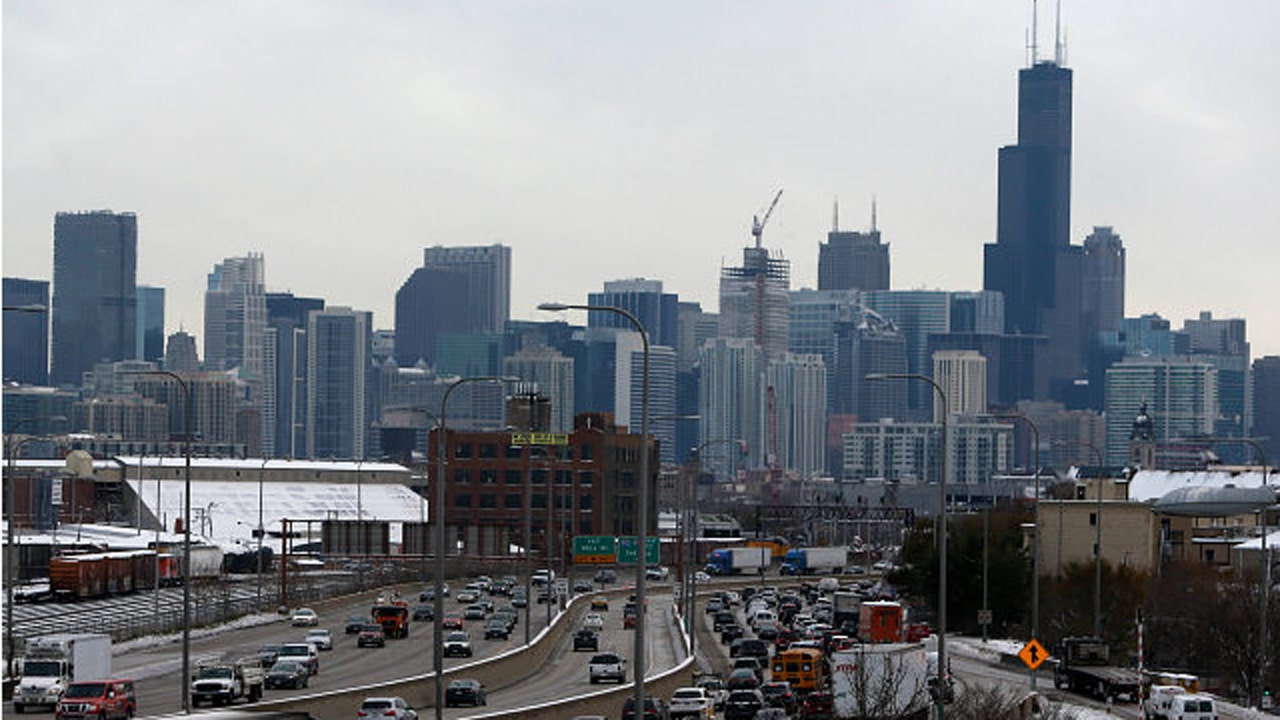When Bill Keener began working at the Marine Mammal Center as a field biologist in the 1970s, there were no whales or dolphins in San Francisco Bay. The waters east of the Golden Gate Bridge were teeming with life (abundant sea lions and harbor seals), but not a single cetacean was to be seen.
Starting in the late 2000s, things began to change.
Aggressive and shocking reports on climate change, the environment, health and science.
There are currently four species of cetaceans that live or regularly visit the busy waters east of the Golden Gate: harbor porpoises, gray whales, humpback whales and bottlenose dolphins.
But Keener and other marine researchers aren't sure whether the animals' presence is a sign of ecosystem health and rejuvenation or a harbinger of planetary disaster. And in each case, the story is a little different.
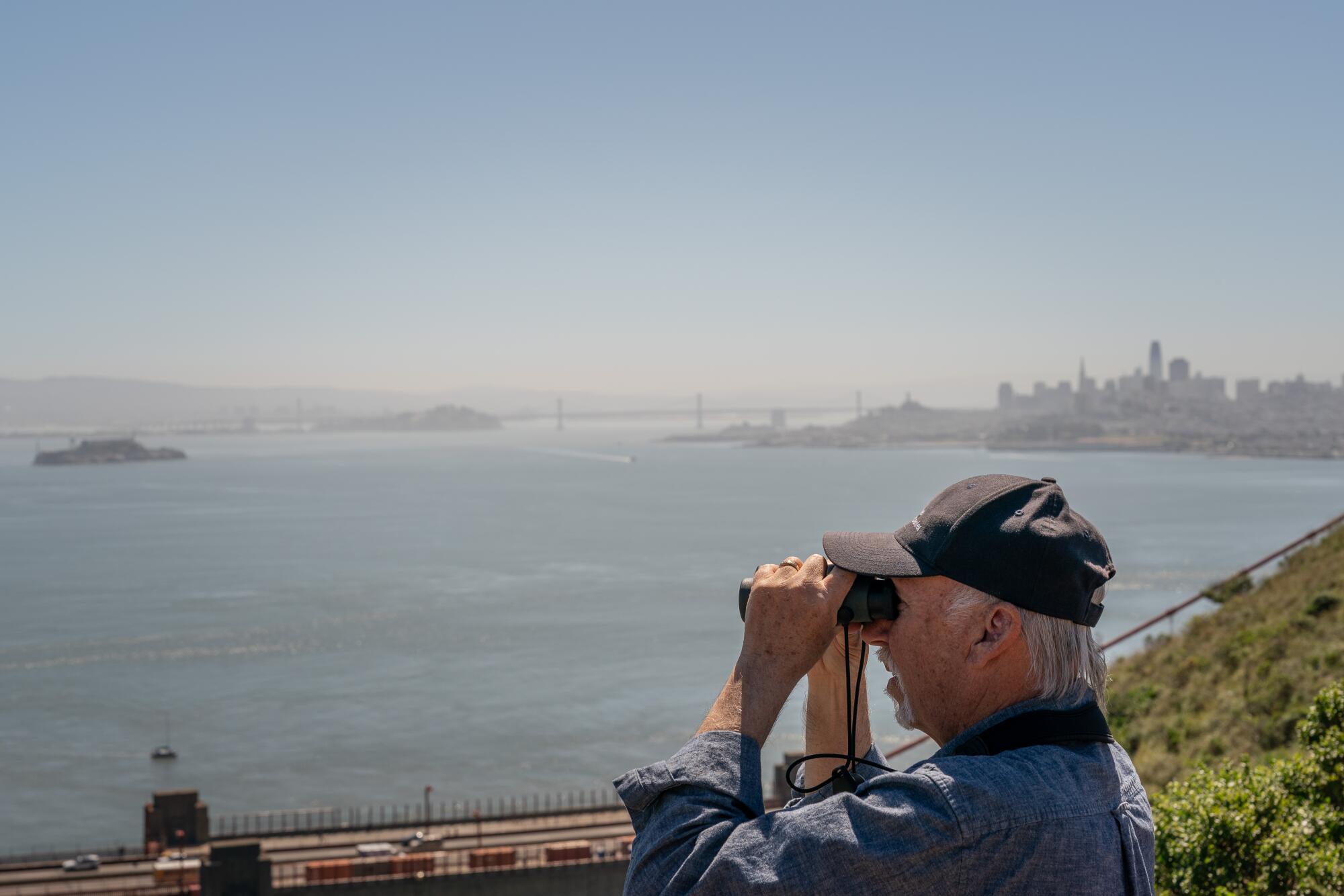
Bill Keener searches for gray whales from an overlook in the Marin Headlands in May.
(Loren Elliott/For The Times)
Whatever the reason for their return, there is growing concern that as the numbers of this charismatic megafauna increase, so does the risk of injury and death in these high-traffic waters.
“We have one of the busiest harbors on the West Coast, 85 private and recreational marinas, high-speed ferries and tons of boat traffic,” said Kathi George, director of cetacean conservation biology at the Marine Mammal Center. “These animals are showing up in places where it’s cause for celebration, but also cause for concern.”
Harbour Porpoises
Take porpoises as an example.
Keener said the friendly, snub-nosed, dolphin-like animals had been a fixture of the bay for thousands of years. That is, until they weren't.
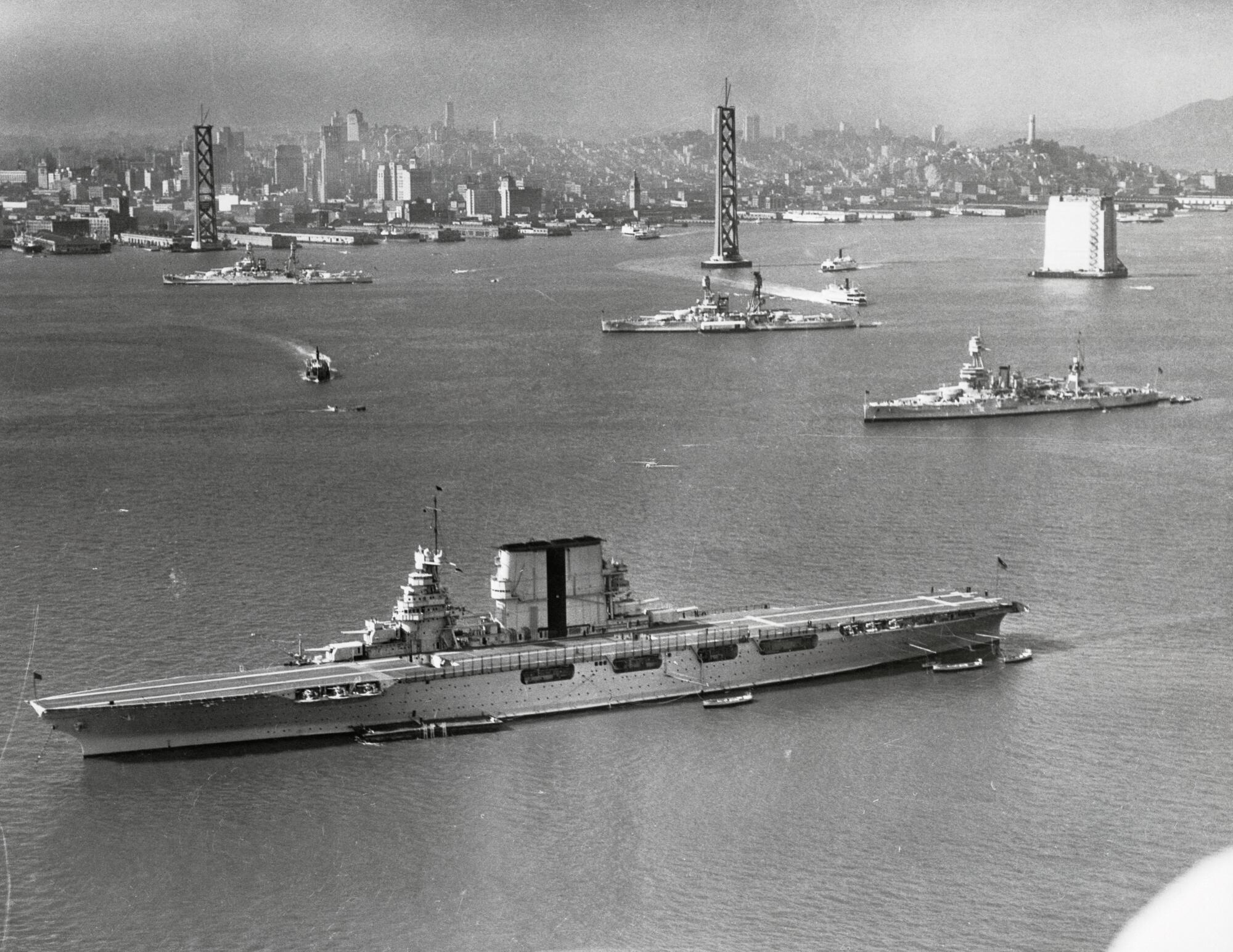
A World War II photograph shows military ships in San Francisco Bay.
(Bettmann Archive)
Evidence from Ohlone shell mounds—large middens of discarded bones and shells found throughout the bay area—indicates that while once plentiful, they died or fled en masse in the 1940s, as the United States prepared its defenses during World War II. Fearful of enemy submarines, the Navy stretched a large steel net across the bay to prevent underwater vessels from sneaking in.
Whether due to the physical presence of the net or the noise and underwater commotion it produced (which Keener says was probably very loud), the porpoises disappeared for more than 60 years.
It's not entirely clear what drove them back. It may have been partly due to the effectiveness of gillnet bans in the 1980s, which allowed the porpoise population to grow. It's also possible that they were following food sources and, once the porpoises came in, they recognised it as a good place to settle.
Whatever the reason for their arrival, they have stayed, and are often seen splashing and diving at the edge of Kirby Cove or around the Point Diablo Lighthouse peninsula.
Humpback whales
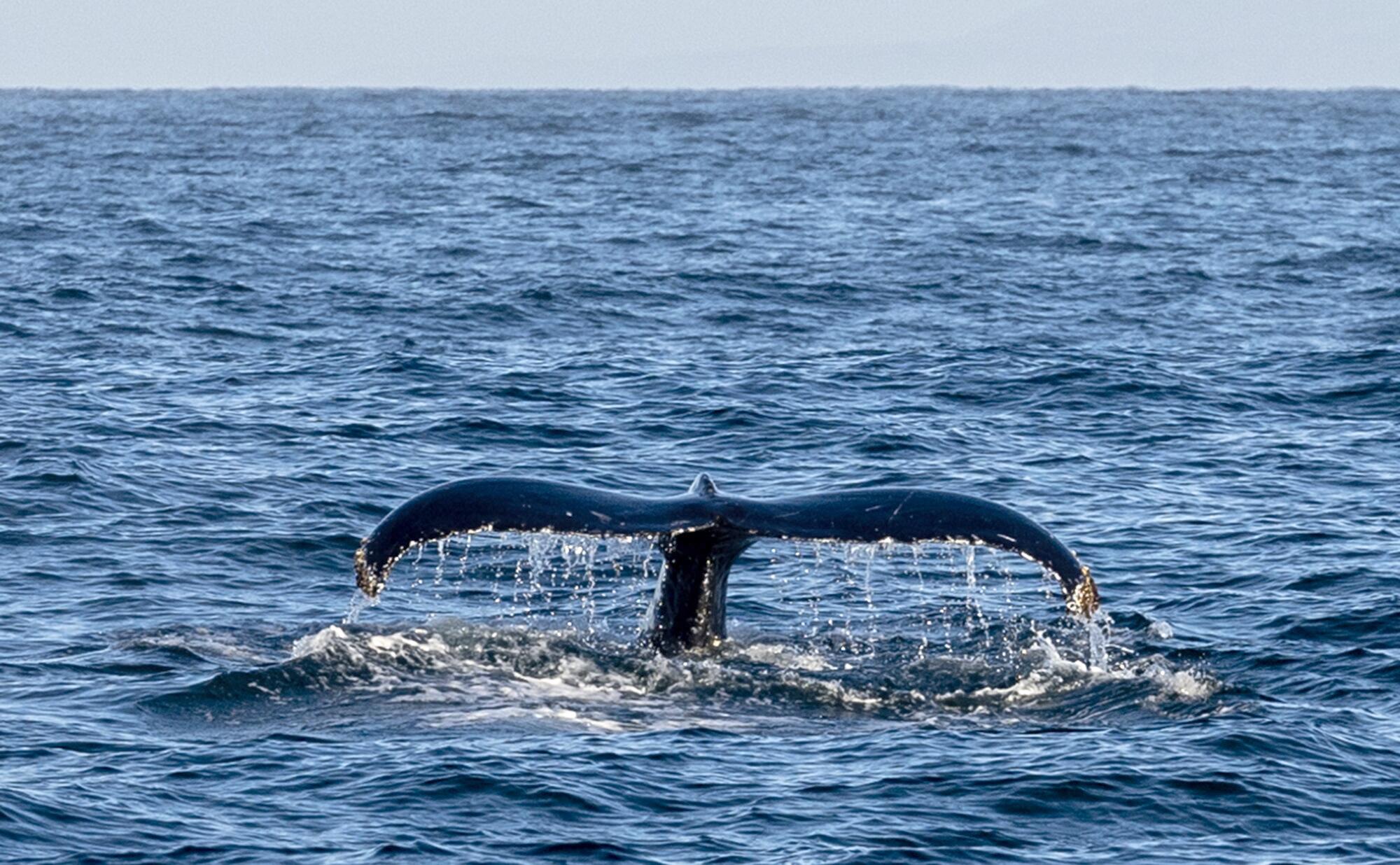
The caudal fin of a humpback whale rises from Monterey Bay last year.
(Brian van der Brug/Los Angeles Times)
Humpback whales may also be good news, although unlike porpoises, they have probably never been permanent residents of San Francisco Bay. There is no evidence of them in the shell mounds and no historical reports of their presence in the bay.
However, they have been a constant presence along the coasts, migrating from their wintering grounds in Mexico and Central America to California in the summer, where they gorge themselves on fish and krill along the coast. However, as a result of whaling, their numbers had dwindled to about 2,000 by the early 1970s.
However, since then its population has grown to reach 20,000 inhabitants.
“That's what happens when you stop hunting them,” Keener said.
And in 2016, for the first time in living memory, a wave of humpback whales came into the bay, following a dense school of anchovies. Since then, they have been regular summer visitors.
Gray whales
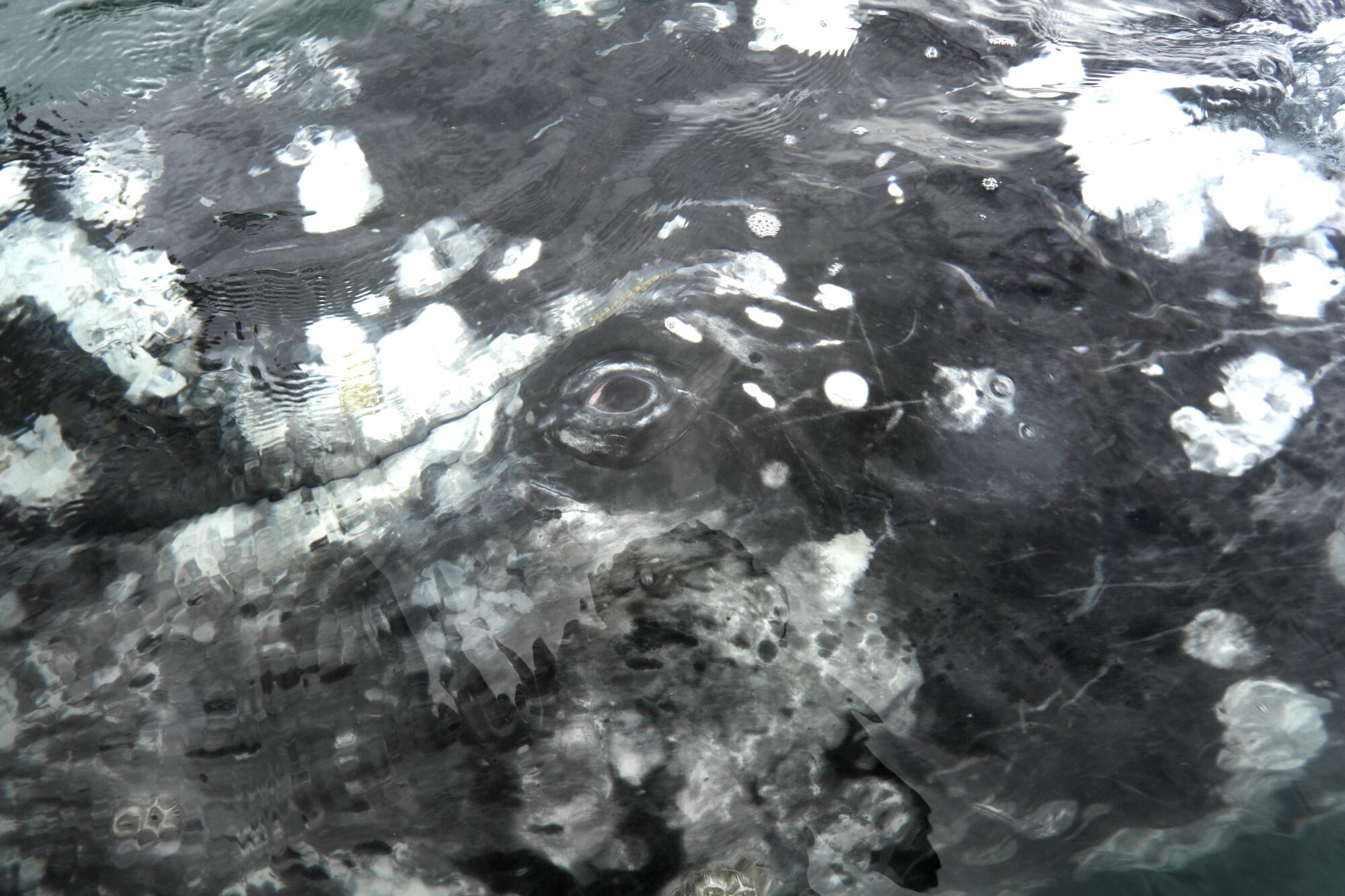
A gray whale surfaces with its eyes open in San Ignacio Lagoon, Baja California, where the species comes to give birth and nurse its young.
(Carolyn Cole/Los Angeles Times)
The story of gray whales may be a little more sinister.
As with humpback whales, there is no historical record of these song whales having had a significant historical presence in San Francisco Bay, other than a skeleton discovered in a 2,500-year-old shell mound and a historical report by Spanish missionaries of gray whale spouts in the bay.
But in 1999, they began to appear, just as a rare mortality event was underway that, by the time it ended in 2002, had nearly halved the eastern Pacific gray whale population.
After mass strandings decreased and the population began to grow again, they were not seen again (except for one or two per year) until 2019, when another mass mortality event occurred.
This time, however, the whales appear to be staying put. Sixteen have been sighted in the bay this year, including one that died.
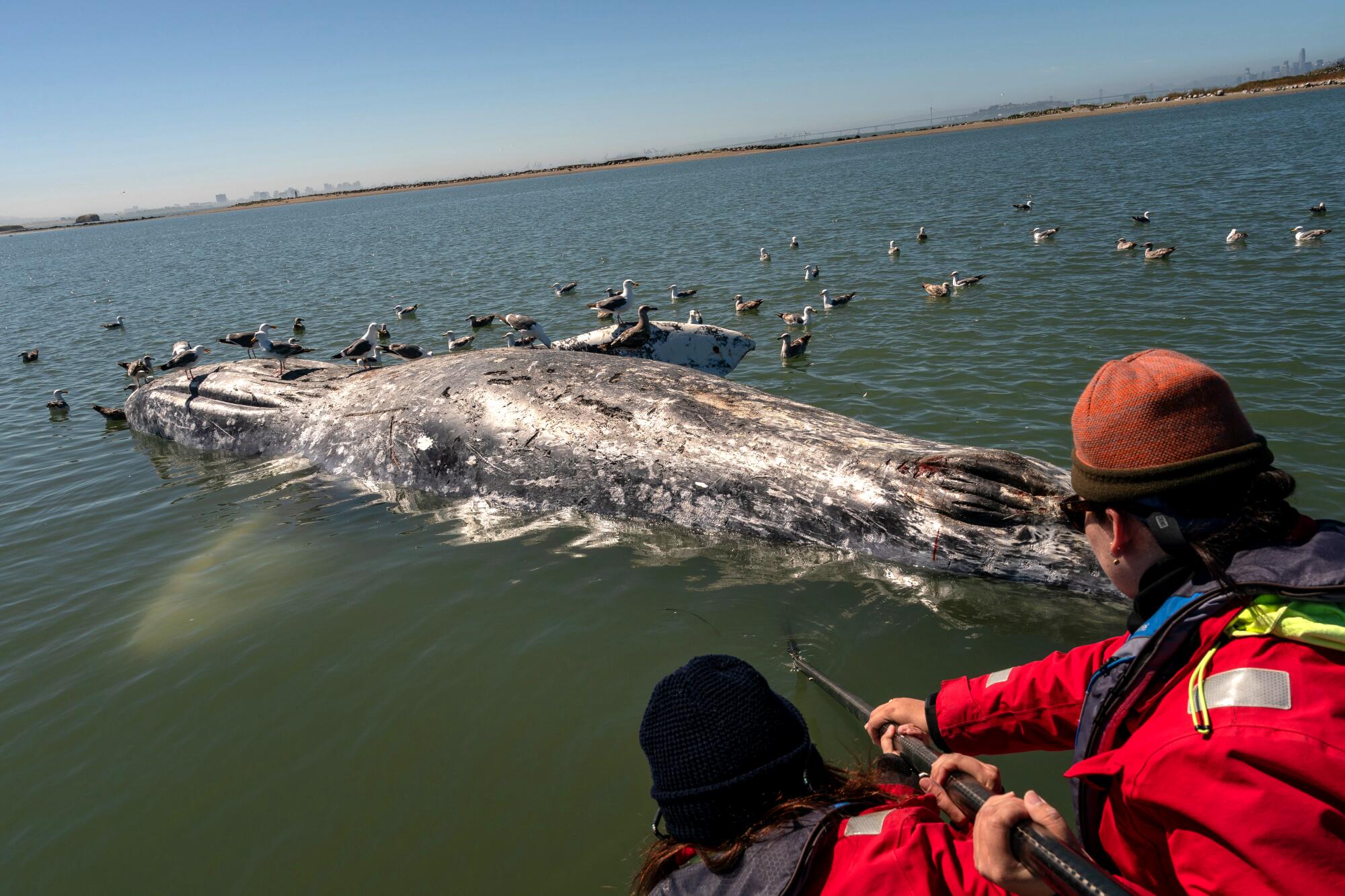
Marine Mammal Center interns Nicole Cristales, left, and Norely Faz, working under NOAA permit No. 24359, submerge a GoPro camera to try to identify a dead gray whale in San Francisco Bay near Richmond last month.
(Loren Elliott/For The Times)
But this time, they're doing something Keener and others consider unusual: They're feeding.
Gray whales typically feed only in Arctic and subarctic waters during the summer months, when the cold seafloor teems with life and millions, if not billions, of tiny shrimp-like creatures that the whales scoop up with their massive jaws. The whales feast throughout the summer, then make the 6,000-mile journey south to Mexico, where females give birth and nurse their calves in the warm, sheltered inlets of the Baja Peninsula.
Once they leave the Arctic, they do not feed again until the following year.
But researchers and observers have seen them diving and foraging in San Francisco Bay, as well as feeding by lunging, a typical humpback feeding style in which they open their mouths and lunge to the surface of the water to catch fish and other organisms.
And while that could be a worrying sign — that their usual feeding grounds are no longer productive, possibly as a result of extreme climate changes taking place in the Arctic and ocean — Keener likes to look at it in a more positive light.
The feeding behavior is “an indication that these animals were probably hungry and are looking for other food sources,” he said, citing his colleagues’ necropsy research on stranded whales that showed a large number were malnourished. “But it also shows that they are resilient and can change their behavior and do something that they are not known for. That’s actually a good sign.”
Keener noted that the animals had survived dramatic changes in climate, such as during the Ice Age. And this flexibility is likely what “kept them going when they had to deal with ice ages and all kinds of environmental changes in their feeding grounds over the last few thousand years.”
He said this bodes well for the species as climate change is affecting vast ecosystems across the planet.
And, he says, his work shows that these aren't whales that just randomly stop by during their migration. Some whales return again and again, leading him and his colleagues to believe that “some of them are learning our local area, figuring out how to navigate and find food. In other words, they're just living in our area.”
Bottlenose dolphins
The bottlenose dolphins that now visit us frequently may also be one of those positive stories.
Generally considered a warmwater species most common in Southern California, they began arriving in San Francisco Bay, like porpoises, around 2008. Their range began to extend northward around the 1980s (initially after a strong El Niño event), and by 2000 they were seen relatively frequently in coastal waters near the bay.
There are no groups of residents within the bay, Keener said, but “they do visit it.”
Keener said the Marine Mammal Center has compiled a local photo-identification catalog that includes 120 adults. Some of them have been identified as dolphins that roamed Southern California in the 1980s. He said dolphins are on the move: One known female was seen cruising Monterey waters in the spring and last week hanging around Sonoma County's Sea Ranch.
“She moves around a lot and that’s normal,” Keener said.
The big picture in a busy bay
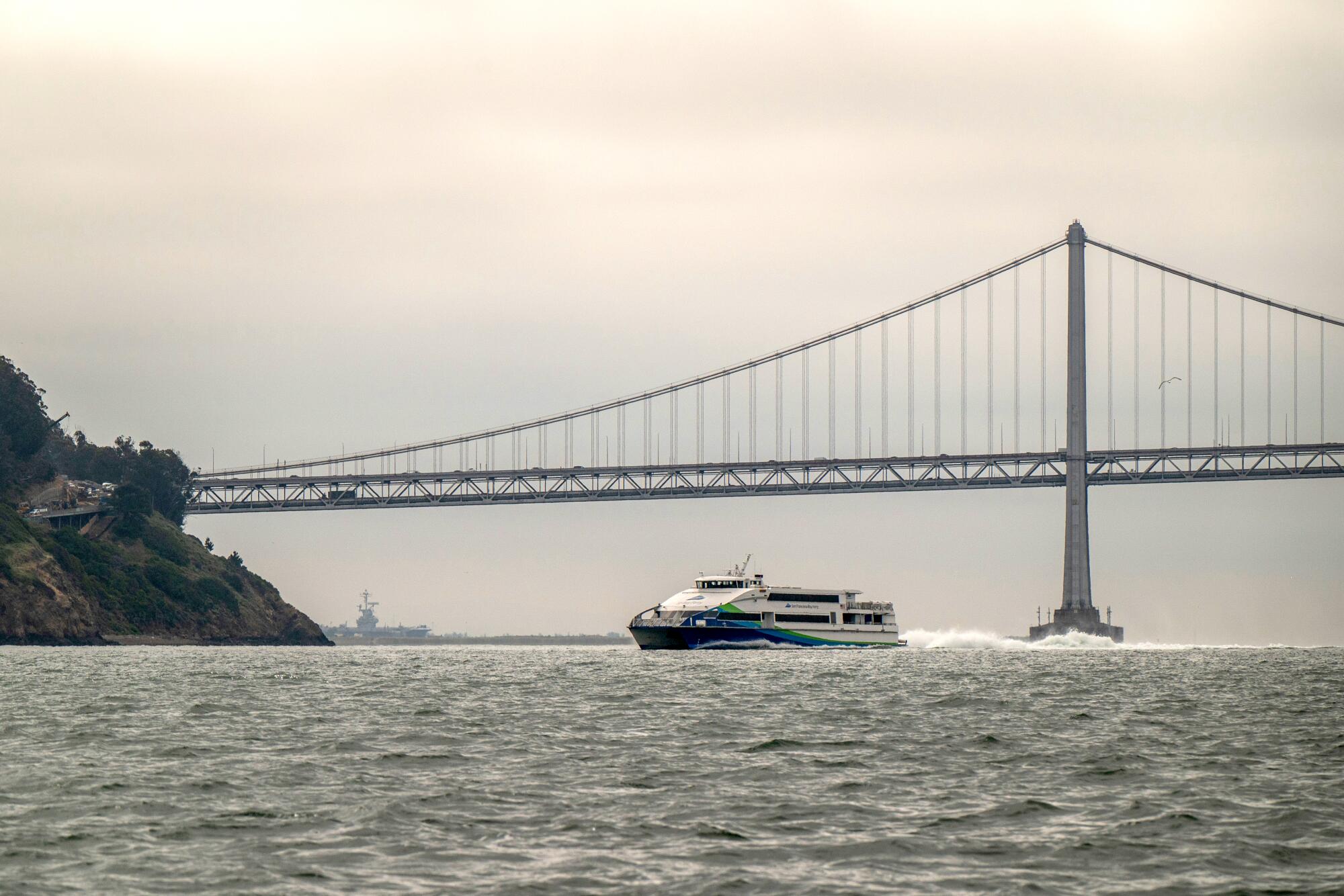
A high-speed ferry sails through San Francisco Bay. Collisions with ships are one of the risks facing marine megafauna.
(Loren Elliott/For The Times)
And while this observer of a rapidly changing ocean and the atypical behavior of its occupants remains hopeful on a grand, existential scale, he — and others — are concerned about the more immediate safety of these charming sea creatures in the busy shipping lanes of San Francisco Bay.
None of these animals are on the endangered species list, he said, but that doesn't stop him and his colleagues from worrying, “especially if they get into the bay, where it's dangerous for them. There's too much boat traffic.”
George, of the Marine Mammal Center, said there are large stretches of water throughout the Bay Area where there are no voluntary ship speed reduction areas, a tactic that conservationists, ports and shipping companies have used elsewhere to decrease the likelihood of ships striking cetaceans.
Newsletter
Our oceans. Our public lands. Our future.
Receive Boiling Point, our new newsletter exploring climate change and the environment, and be part of the conversation – and the solution.
You may occasionally receive promotional content from the Los Angeles Times.
But George said she and other conservationists are working on it with the Harbor Safety Committee, which she said has been receptive and is working to formalize plans to protect the animals.
“I am very excited about the collaborations that are taking place and that continue to develop,” she said.

